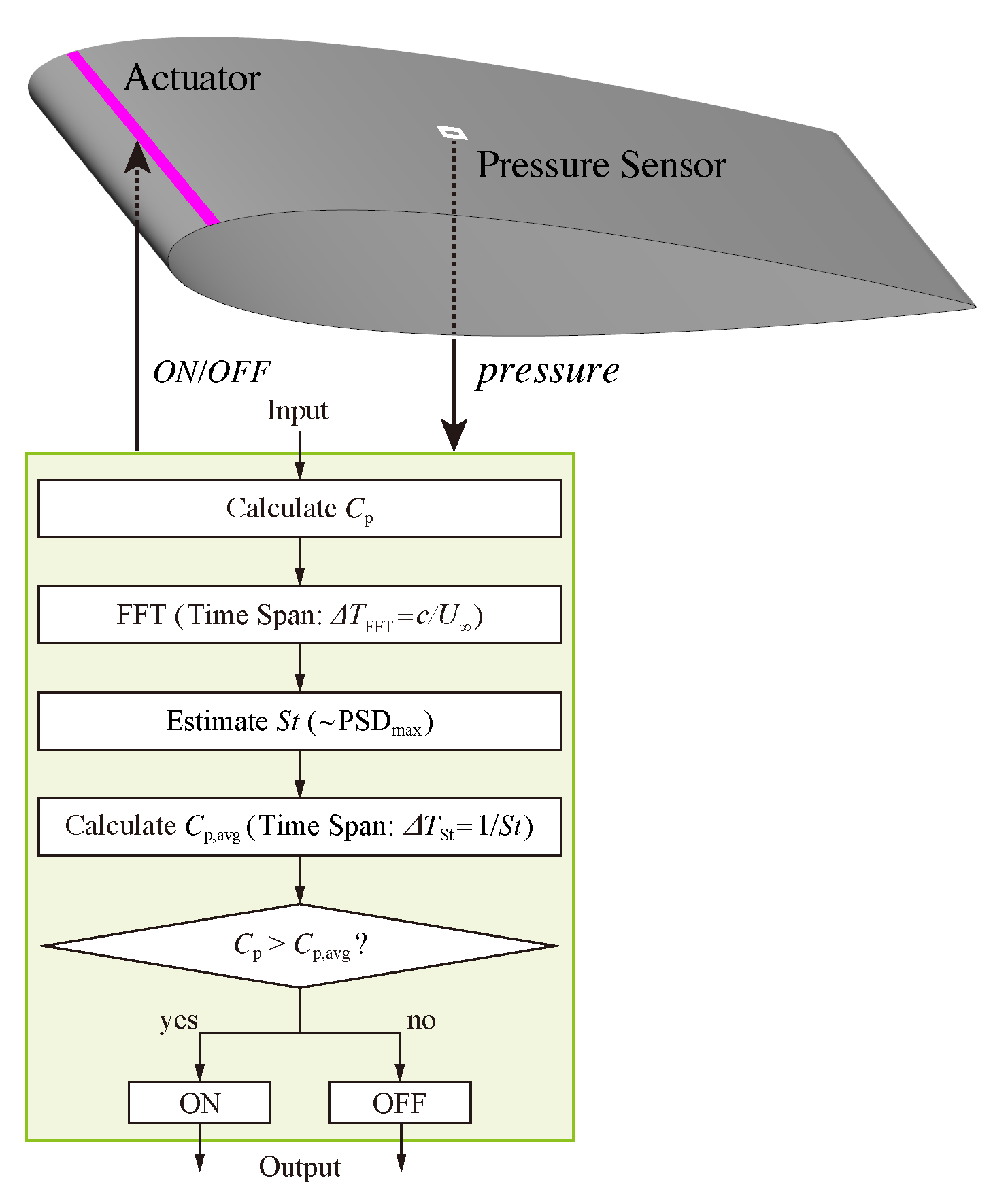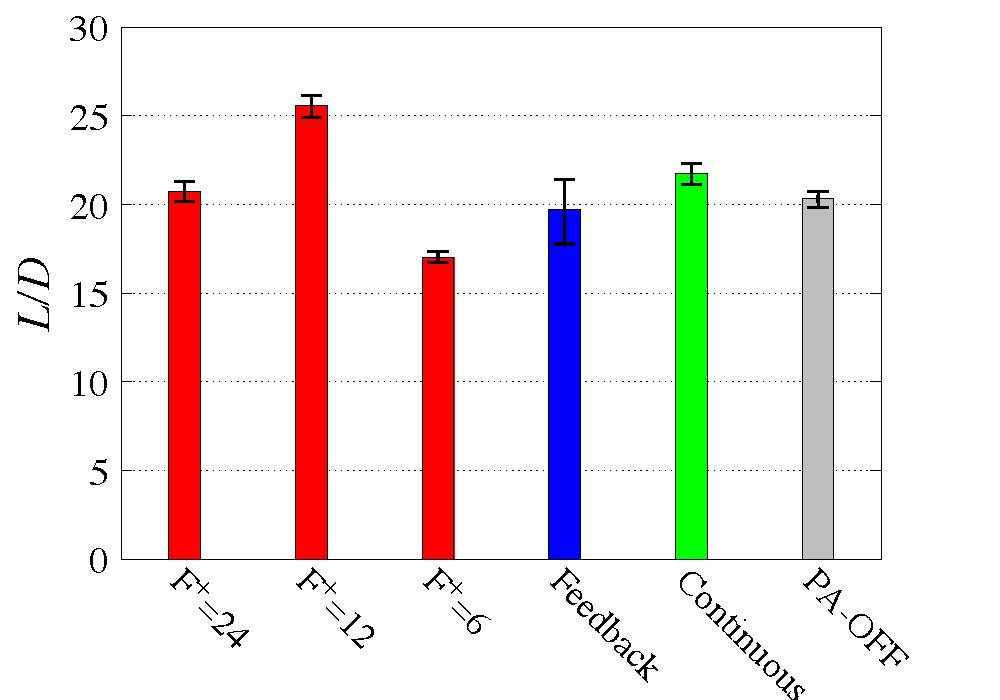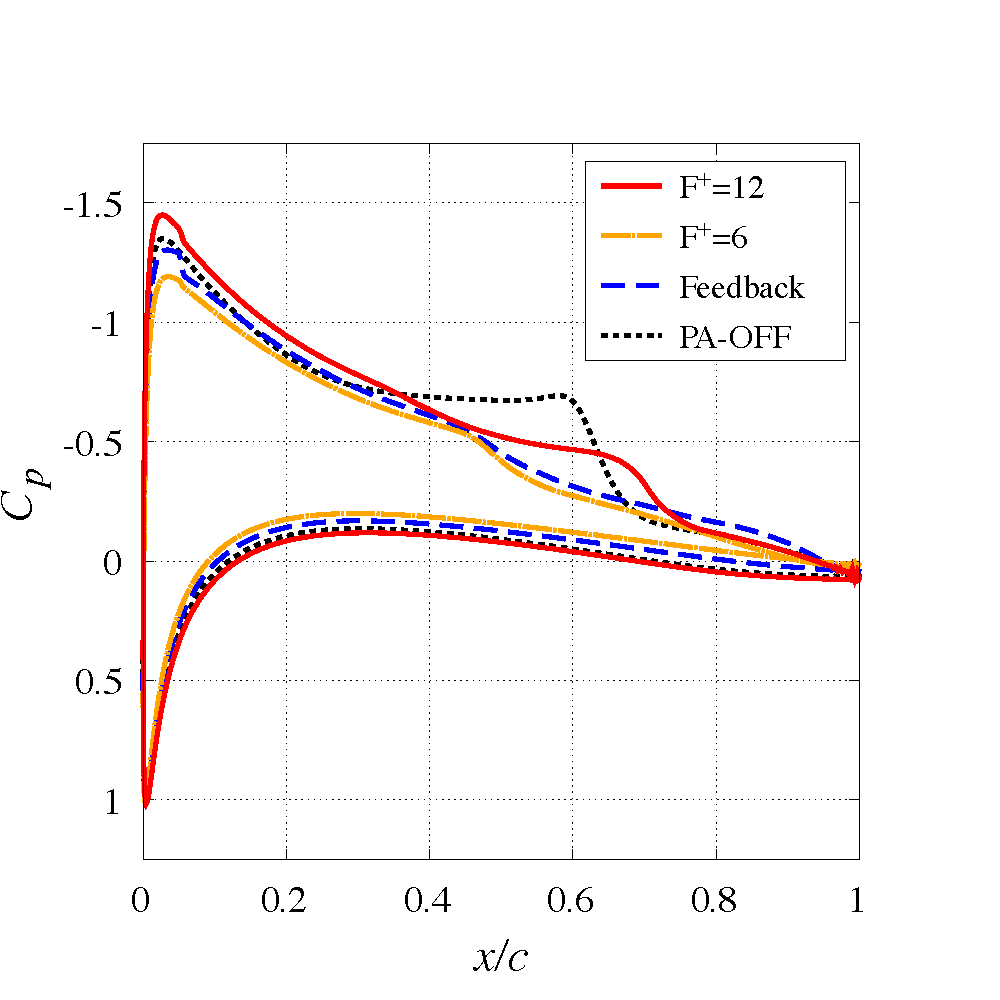Feedback Control of Flow Separation Using DBD Plasma Actuator
JAXA Supercomputer System Annual Report February 2021-January 2022
Report Number: R21EACA26
Subject Category: JSS Inter-University Research
- Responsible Representative: Kengo Asada, Assistant Professor, Department of Information and Computer Technology, Faculty of Engineering, Tokyo University of Science
- Contact Information: Kengo Asada(asada@rs.tus.ac.jp)
- Members: Kengo Asada, Takuto Ogawa
Abstract
The project develops flow control technic by using dielectric barrier discharge (DBD) plasma actuator to establish high efficient and robust vehicle systems such as rockets, aircrafts, and motor vehicles. We propose and demonstrate feedback control methods to adapt unsteady flows over the vehicles through a series of high-fidelity unsteady simulations.
Reference URL
N/A
Reasons and benefits of using JAXA Supercomputer System
To perform large-scale three-dimensional unsteady flow simulations using the compressible fluid solver LANS3D, which has a wealth of computational achievements with a JAXA supercomputer system.
Achievements of the Year
This project proposes a feedback control model for flow separation control around an airfoil using a DBD plasma actuator (PA) and verifies its performance.
The proposing feedback model regards the decrease in pressure value measured by a pressure sensor placed on the airfoil surface as a vortex passage and switches the driving state of the actuator placed near the leading edge of the airfoil according to the vortex passage. Up to the present, we have applied the control model to a relatively thick airfoil (NACA0015 airfoil, Reynolds number: 63,000). We have shown that it obtains higher aerodynamic performances than the thin airfoil, which is used in actual small model airplanes in a wide range of angles of attack. If thick airfoils can be utilized for airplanes, it would be one way to solve aircraft's structural and loading problems.
In the third fiscal year of Reiwa, a parametric study of burst drive was conducted at the angle of attack of 4 degrees to investigate effective control methods because there was no improvement of lift drag ratio by the control model at this angle of attack. Unlike the feedback control, burst drive is a drive method that switches PA driving state ON and OFF according to a predetermined dimensionless burst frequency F^+.
Figure 2 shows the lift-drag ratio (L/D) obtained by each control method. Burst drive (F^+ = 6, 12, and 24), feedback control model (Feedback), continuous drive (Continuous), and non-control (PA-OFF) are shown, respectively. As the burst drive frequency, this fiscal year, we examined 12 and 24 additional to 6, which have been considered to be effective near the stall angle of attack. This is because the flow scale in the separated flow region becomes smaller at low angles of attack. As shown in Fig. 2, the L/D is most improved when F^+ = 12 is used.
Figure 3 shows the pressure coefficient (Cp) distribution of the selected cases. In the case of F^+ = 12, which has the largest L/D, the distribution on the pressure side is close to that of the non-control case (PA-OFF), while on the suction side, the peak of negative pressure is the highest. The negative pressure value is maintained higher than in other cases from the leading edge to the vicinity of 40% of the cord length. It is considered that the high L/D is obtained by such a characteristic pressure distribution. In addition, the plateau pressure distribution peculiar to the separated flow region is seen on the trailing edge side compared to the other cases.
Figure 4 shows the instantaneous flow field of the selected cases. The isosurface is the second invariant of the velocity gradient tensor colored by the velocity in the chord direction and indicates the vortex structure. In the F^+ = 12 and Feedback cases, two-dimensional vortices with an axis in the span direction are formed on the airfoil surface by the drive of PA. In F^+ = 12, the distance between the vortices is shorter, and the turbulent flow is seen near the trailing edge. The transition to the turbulent flow near the trailing edge is similar to PA-OFF; however, the vortices line up on the airfoil surface, and the separated region is kept small than PA-OFF.
From those obtained results, it was found that the L/D can be improved, leaving the characteristics of the non-control flow by driving the PA at a relatively high frequency (F^+ = 12) at the angle of attack of 4 degrees, where the performance of the feedback control model was low. In the future, a more robust model could be proposed by introducing a high-frequency drive mechanism into the feedback back control model.

Fig.4: Instantaneous flow fields. The isosurface is Q-criterion colored with the chordwise velocity.
Publications
- Peer-reviewed papers
T. Ogawa, K. Asada, S. Sekimoto, T. Tatsukawa and K. Fujii, "Dynamic Burst Actuation to Enhance the Flow Control Authority of Plasma Actuators", Aerospace MDPI, Vol. 8, No. 12, Dec. 2021.
Usage of JSS
Computational Information
- Process Parallelization Methods: MPI
- Thread Parallelization Methods: Automatic Parallelization
- Number of Processes: 79
- Elapsed Time per Case: 40 Hour(s)
JSS3 Resources Used
Fraction of Usage in Total Resources*1(%): 0.00
Details
Please refer to System Configuration of JSS3 for the system configuration and major specifications of JSS3.
| System Name | CPU Resources Used(Core x Hours) | Fraction of Usage*2(%) |
|---|---|---|
| TOKI-SORA | 17.23 | 0.00 |
| TOKI-ST | 0.00 | 0.00 |
| TOKI-GP | 0.00 | 0.00 |
| TOKI-XM | 0.00 | 0.00 |
| TOKI-LM | 0.00 | 0.00 |
| TOKI-TST | 0.00 | 0.00 |
| TOKI-TGP | 0.00 | 0.00 |
| TOKI-TLM | 0.00 | 0.00 |
| File System Name | Storage Assigned(GiB) | Fraction of Usage*2(%) |
|---|---|---|
| /home | 60.00 | 0.06 |
| /data and /data2 | 16758.09 | 0.18 |
| /ssd | 200.00 | 0.05 |
| Archiver Name | Storage Used(TiB) | Fraction of Usage*2(%) |
|---|---|---|
| J-SPACE | 11.12 | 0.08 |
*1: Fraction of Usage in Total Resources: Weighted average of three resource types (Computing, File System, and Archiver).
*2: Fraction of Usage:Percentage of usage relative to each resource used in one year.
ISV Software Licenses Used
| ISV Software Licenses Used(Hours) | Fraction of Usage*2(%) | |
|---|---|---|
| ISV Software Licenses(Total) | 0.00 | 0.00 |
*2: Fraction of Usage:Percentage of usage relative to each resource used in one year.
JAXA Supercomputer System Annual Report February 2021-January 2022





